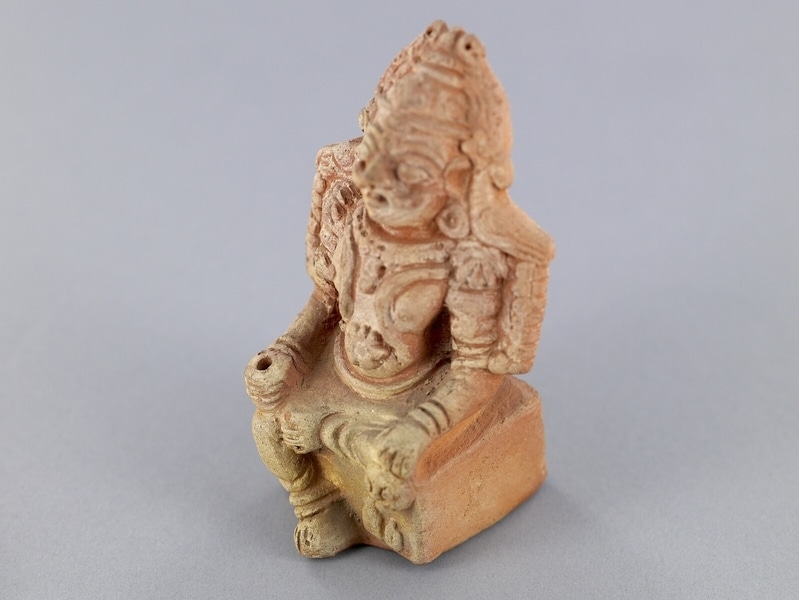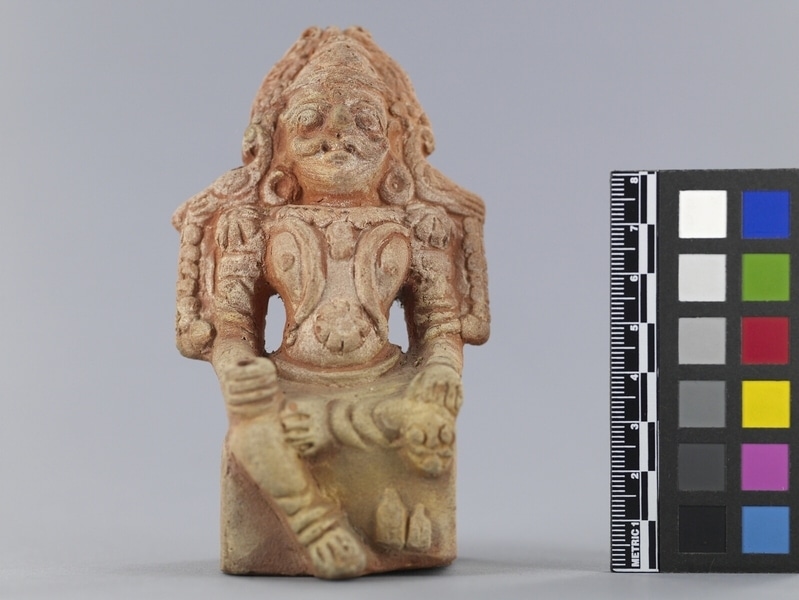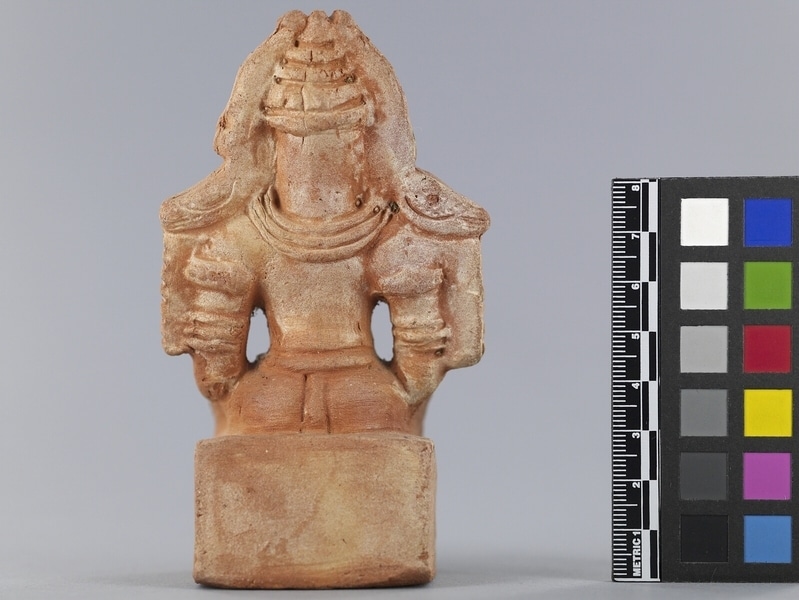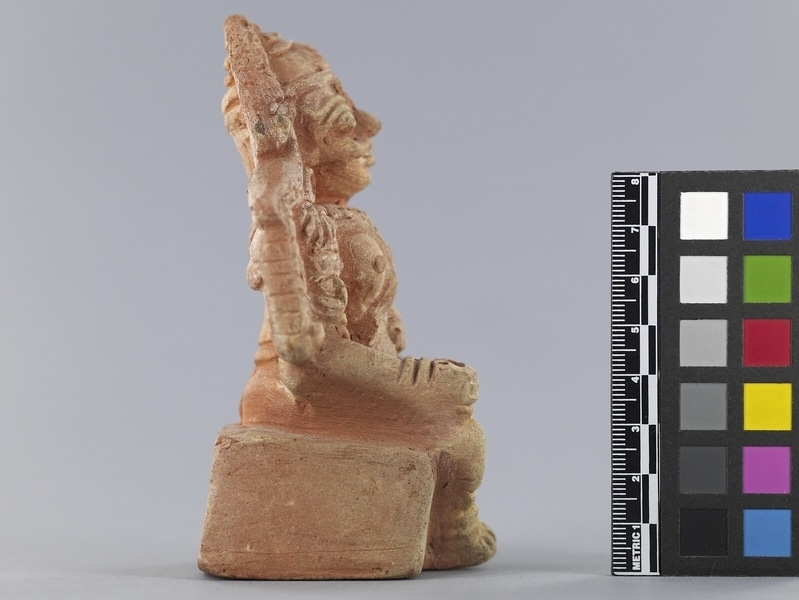Incense Burner Item Number: Eg63 from the MOA: University of British Columbia




Description
Seated clay figure of man in ceremonial costume. Well-modeled form exhibits prominent facial features, mustache, forehead markings. Elaborate head-piece has serpent-like ornamentation flowing from high crown down both sides to elbows. Ornaments at chest and ears; floral emblem on shoulders and at centre waist. Perforations in right hand, skull. Box shaped base.
History Of Use
The potters of Tamil Nadu, as in most other parts of India, provide villagers with containers and utensils for domestic use. Usually one area of the village is home and workplace to a group of potter families (Velar caste). Men and women both make pots, using two types of wheels . In each community of Velars there are a few men who have the additional responsibility for making clay images of gods and other votive offerings. Some enjoy the status that allows them to wear the sacred thread and perform as officials for the village temple, for example at installation of images, or during festivals of worship (puja). Traditionally, clay images are commissioned as required by a villager, not made for market sales. Once installed in a village temple they are never removed, eventually crumbling back into the earth. The design of this incense burner is adapted from traditional village temple figures but is made for sale to tourists and pilgrims.
Cultural Context
ritual
Iconographic Meaning
Karuppusamy: black god, a Dravidian village deity. A demonic god who protects specific areas from intrusion and harm. Usually worshipped by villagers and common people. Blood sacrifice given. He is shown holding a severed head, wearing the jewellery and ornaments of the classical kingdoms of south India, including two parrots on his shoulders.
Item History
- Made in Tamil Nadu, India
- Collected during 1974
- Owned by Stephen Inglis before December 2, 1977
- Received from Museum of Anthropology Donations Fund (Funding source) and Stephen Inglis (Seller) on December 2, 1977
What
Who
- Culture
- Tamil
- Previous Owner
- Stephen Inglis
- Received from
- Museum of Anthropology Donations Fund (Funding source) and Stephen Inglis (Seller)
Where
- Holding Institution
- MOA: University of British Columbia
- Made in
- Tamil Nadu, India
When
- Collection Date
- during 1974
- Ownership Date
- before December 2, 1977
- Acquisition Date
- on December 2, 1977
Other
- Item Classes
- ceramics
- Condition
- good
- Accession Number
- 0411/0048